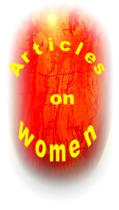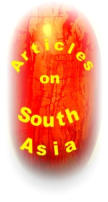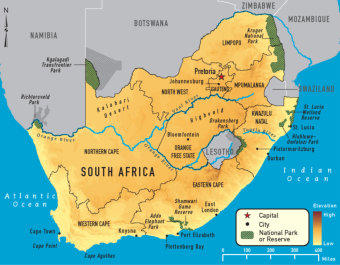SCARY
RAPE STATISTICS IN SOUTH AFRICA
.





‘Knowledge is power’


World’s
encyclopedic
knowledge
compacted
in
your
hand




Please raise the vol to listen to the
lady airing awe @ the SINGLE author encyclopedia
South African society, its culture and its institutions have been profoundly affected by
the institutionalised dehumanisation imposed by the apartheid system as well as the
levels of force used, on the one hand, to enforce these policies and, on the other hand,
to resist them. In this way, the system traumatised an entire nation. Every person in
South Africa has been affected by the violence, structural and physical, of apartheid in
one form or another. At its worst, this continues to play out in a profound disrespect for
human life and the integrity of individual human beings and an attitude of impunity
where the consequences of violence are concerned, which in turn causes more
violence. An important part of constructing a new shared morality is South Africa’s
constitution, which enshrines the right to gender equality.[5] But in the daily reality of
many people this remains nothing more than an aspiration, and most commentators
agree that interpersonal relations in South Africa remain marked by extreme gender
inequality.[6]
The circumstances described above should be considered together with other factors
in order to provide a comprehensive explanation for South Africa’s high levels of sexual
violence. Situational factors such as poverty and drug abuse are inadequate on their
own as explanations; it is only when these factors are seen in the context of the
massive and institutionalised violence perpetrated against South Africans by the
apartheid system that we can begin to understand why sexual violence is so pervasive
across population groups. A failure to recognise that South Africans will carry the scars
of apartheid for generations to come is naïve, dangerous and counterproductive to the
project of building a new egalitarian value system and to transforming our institutions in
accordance with those values.
Political transition and sexual violence
In order to understand rape in South Africa today, we need to understand its
prevalence and nature in the past. That, however, is very difficult, as rape statistics
from the apartheid era – particularly those for non-white populations – cannot be
viewed as reliable. This is due to many factors, some of which are the following:
Prior to South Africa’s democratic transition, police resources were concentrated in
white areas, with policing in black areas being predominantly targeted towards political
control. Township residents had little faith in a ‘justice’ system that was at the same
time being used to oppress them. As a result, apartheid-era crime statistics are biased
by under-reporting.
Worse still, complainants ran the risk of being seen as colluding with security forces.
Writing about sexual violence in 1994, Armstrong quotes an informant as saying that
during apartheid ‘no black woman would go to a police station … just to be seen near a
police station might mean that you would be perceived as an informer, your home
would be burnt down and you would be killed.’
Furthermore, gender-based violence was seen as a potentially divisive problem that
could be used politically against black men and thereby divert attention from the
pressing issue of racism.
It is also quite likely that even when black women reported being raped – to
predominantly white police officers – many were not taken seriously and their reports
not recorded.
Before 1993, marital rape was not a crime and none of these assaults would have
been included in any statistics.
Under apartheid, the territory that is today South Africa contained a number of
nominally independent homelands and self-governing territories, each with their own
police force. In total, prior to 1994, South Africa had 11 different police agencies, with
widely varying competencies in the collection of crime statistics. Crimes reported in the
so-called independent homelands were not included in national figures. Poor record-
keeping makes it impossible to even estimate pre-1994 levels of rape in those areas.
You might also like:
New jab to halt wear and tear in your knee joints: Drug halts osteoarthritis
progression
The disturbing world of the Deep Web or Dark Web: How contract killers
and drug dealers use the Internet
Why The New York Times Reporting On Straus-Kahn Case Is Bad
Reporting?
12.000.scripts.mit.edu/
Empowering Book Newsletter







WOMEN’S POWER: ITS PAST, ITS PRESENT, ITS FUTURE: FEMOCRACY
WEB PAGES
OUR OFFERING
UPLOADED ITEMS
OUR EMAIL
kri200@womenspowerbook.org
QUESTION




















